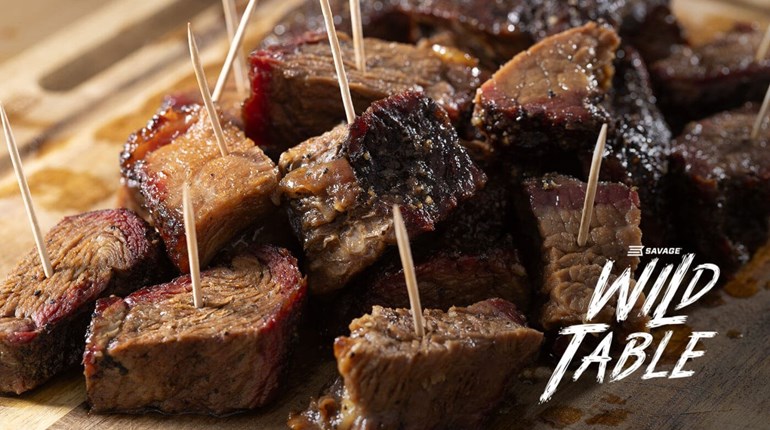For those who want to live in self-reliance, a well-stocked larder is required to keep you less reliant on the grocery store. There are some basic staples required for a self-sufficient pantry, along with age-old food-preservation techniques: pickling, smoking, curing, jamming and fermenting. Here are the building blocks of a self-sufficient pantry.
Storage
The most economical way to buy your staples—from honey to grains and beans—is in bulk and then store them yourself.
• Galvanized trash bins with tight lids are a great option for grains and other dried staples, and they are available online in many sizes. Be sure there is no moisture on the floor beneath the bin or raise the bins up on cinder blocks if this is a concern.
• Plastic bins are another option but are much more susceptible to varmints. Line the plastic bins with Mylar bags, which are effective in keeping out light and other elements that can damage your stash.
• Vacuum-packing systems are another great way to seal food for extended storage.
Temperature
Temperature is a major factor that can affect your pantry. Canned and boxed goods should be stored in a cool, dry place between 45 F and 65 F, either in a temperature-controlled room or in a basement or cellar. Dry foods are best kept away from vents, and off the ground to avoid pests, unexpected moisture and heat. Refrigerated food should be kept between 34 F and 40 F, and frozen foods should be kept well below freezing.
Labeling
Labeling is crucial in building a well-stocked pantry. You should approach your food storage with “first in, first out” in mind, meaning the oldest items should be consumed first. For example, each time you add a jar of canned tomatoes to the shelf, for example, it should go to the back of the line. Keep track of this by naming and dating all of your homemade food items with a permanent marker. You should do this for items before you put them in the freezer and refrigerator as well.
Staples for Every Pantry
When storing foods for homesteading and self sufficiency, moderation and variety are important. Staples will fall into four basic categories:
• Dried foods
• Canned foods
• Supplementary foods
• Salt for home curing and preserving
Items to have in bulk in your larder include:
• Aluminum foil
• Ascorbic acid: This is helpful when canning and preserving fruits and vegetables because it slows down the browning process. You can also use powdered vitamin C.
• Baking powder: It will last 18 months and is used to “fluff up” baked goods.
• Baking soda: It lasts two years and is used for baking, cleaning, air freshening, and homemade body products.
• Brown rice: It has a shorter shelf life than white rice (about eight years versus the almost indefinite shelf life of white rice) but it has higher nutritional benefits.
• Canned fruits and vegetables: It is most economical to can your own, and as long as you use the “first in, first out” rule, they will not expire before being consumed. Properly canned food stored in a cool, dry place will retain its quality for at least one year. Canned food stored in a warm place can lose some of its quality in a few weeks or months, depending on the temperature. Moisture can also corrode lids, causing spoilage.
• Canned meats: These are best used within two years and follow the “first in, first out” rule.
• Corn: Like wheat, whole corn kernels last much longer than cracked or ground corn, so grind yours by hand if you can. The storage life is 8 to 12 years.
• Fats and Oils: Olive oil stores longest when frozen in plastic bottles, lasting four years that way. Mayonnaise, canned butter and nut butters are another good source of fat. Jarred items should be used within six months if possible, but when purchased and stored in metal cans certain oils can last up to two years.
• Food-storage freezer and vacuum bags
• Mason jars, lids and rings: These will allow you to preserve your vegetables and fruits without refrigeration.
• Multivitamins and other food supplements: Stock up on supplements that are primarily only available in fresh foods. These include B-complex, vitamins C, A, D, E, K and tablets of blue-green algae.
• Oats: The storage life of whole oats depends on the variety but ranges from three to seven years.
• Powdered milk: The nonfat variety stores the longest—up to 10 years; the nitrogen-packed variety stores five or more years.
• Salt: It does just about everything, from flavoring to preserving and curing. Get both coarse and fine-grain salt.
• Spices and dried herbs: These last six months to two years, and are used for pickling, preserving and making simple foods more exciting. Green, leafy herbs grow stale more quickly than spices like nutmeg.
• Sugars: This includes honey, maple syrup, molasses, sorghum and regular white sugar, all of which will last almost indefinitely. Honey is the only food that never goes bad.
• Vinegar: Unopened, a bottle lasts two years and is used for pickling, among other things. Once a bottle has been opened, however, it is best used within six to nine months.
• Wheat: Whole wheat stores for 30+ years, much better than ground white or wheat flour, which has a short shelf life (six to eight months in the pantry). So for maximum efficiency buy whole grains and a hand wheat grinder.
• Yeast: It is used for baking, fermentation and converting sugar to alcohol. It lasts about one year on a shelf, about five years in the refrigerator and almost indefinitely in the freezer.
These are the basic tenets of building a self-sufficient pantry. If you have tips and tricks that have worked for you, be sure to share them with us in the comments.





































